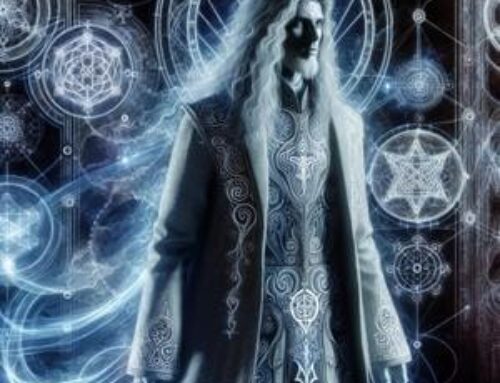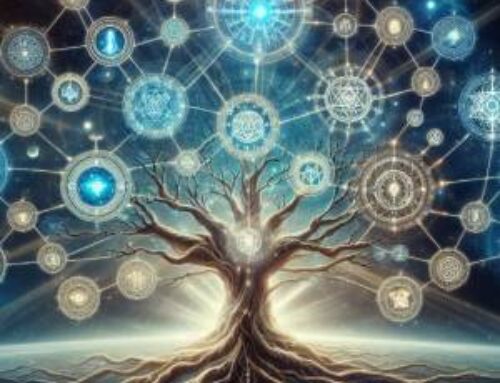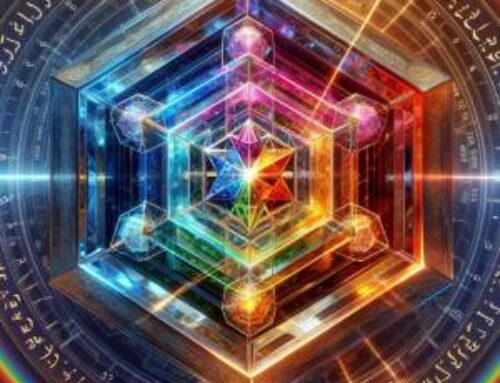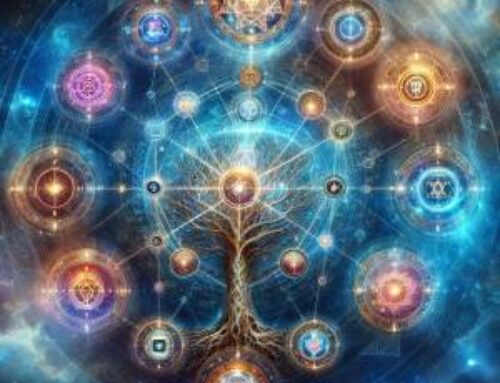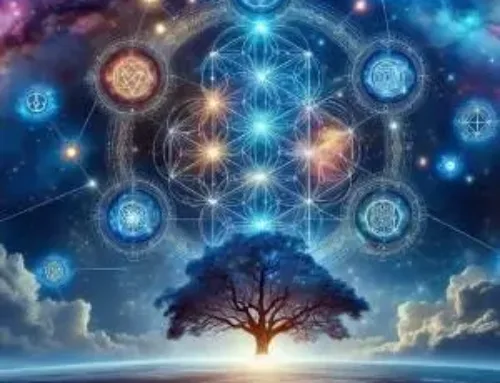Contents
- 1 Introduction to Messianic Kabbalah
- 2 The Sefirotic Journey: Christ as the Embodiment of Divine Emanations
- 3 Tikkun Olam: Christ’s Mission of World Rectification
- 4 The Messianic Era: Christ’s Role in Universal Redemption
- 5 Conclusion
- 6 FAQ – Messianic Kabbalah
- 6.1 1. What is Messianic Kabbalah?
- 6.2 2. How do the Sefirot relate to Christ in Messianic Kabbalah?
- 6.3 3. What is the significance of Tikkun Olam in Messianic Kabbalah?
- 6.4 4. How can believers practically engage with the principles of Messianic Kabbalah today?
- 6.5 5. Where can I study more about Messianic Kabbalah?
- 7 References:
Introduction to Messianic Kabbalah
In an age where spiritual pathways intricately entangle within the chronicles of esoteric traditions, Messianic Kabbalah (Qabalah) presents itself as a profound synthesis of Kabbalistic lore and the messianic aspirations embodied by Christ. This spiritual nexus affords a distinctive perspective to interpret the redemption sagas through the intricate motifs of Kabbalistic symbols intertwined with the redemptive mission of Christ.
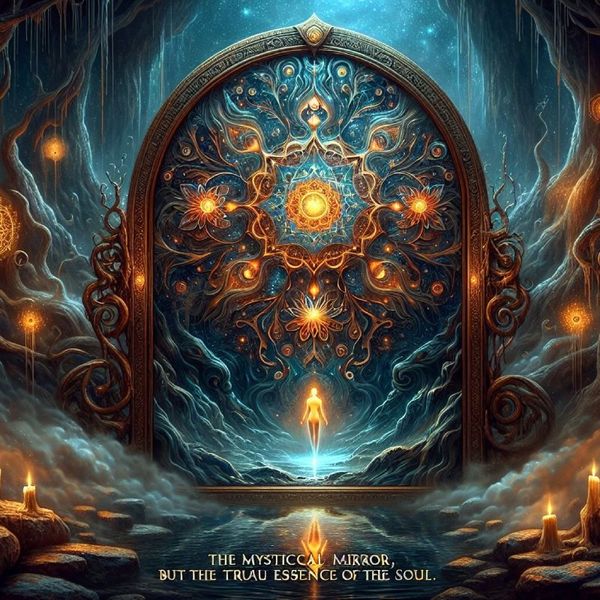
Messianic Kabbalah propounds a transformative journey into spiritual verities, blending the Christian messianic ethos with the ageless teachings of the Kabbalah. As we commence this profound inquiry, we examine how Messianic Kabbalah sheds light on the pathways delineated by the Sefirot (Sephiroth)—each a reflection of divine attributes that resonate with the virtues of Christ. This alignment not only deepens our comprehension of messianic foretellings but also amplifies our spiritual regimen by portraying Christ as a central figure in the universal schema of cosmic repair, a principle deeply ingrained in Kabbalistic ideology.
This discourse extends an invitation to dissect the mystical reciprocity between Kabbalistic and Christian messianic doctrines, providing insights into how the fusion of these traditions may cultivate a more enriched, comprehensive spiritual insight and personal metamorphosis.
The Sefirotic Journey: Christ as the Embodiment of Divine Emanations
Understanding the Sefirot: The Divine Blueprint
The Kabbalistic Tree of Life is a complex symbol that represents the ten divine emanations through which the Infinite manifests the finite world (1). Each Sefira (singular for Sefirot) is not only an attribute of God but also a channel through which divine energy flows into the universe. From Kether (Crown), representing divine will and the highest form of consciousness, to Malkuth (Kingdom), embodying the physical universe where these energies materialize, the Sefirot create a framework for understanding cosmic and spiritual order. In Messianic Kabbalah, each Sefira reflects a facet of Christ’s divine mission, enriching our understanding of His spiritual legacy.
Christ and the Sefirot: A Symbolic Alignment
Aligning Christ with the Sefirot reveals Him as a divine conduit, mirroring these attributes in His earthly mission. For instance, Chesed (Mercy) reflects Christ’s unconditional love and kindness, while Geburah (Judgment) aligns with His role as a just judge. This mirroring extends into Tiphareth (Beauty), which synthesizes mercy and judgment, presenting Christ as a perfect mediator who harmonizes divine grace and moral order. Tiphareth, located at the heart of the Tree, resonates deeply with the role of Christ, embodying sacrifice, balance, and ultimate redemption—central themes in Christian theology.
The human soul is seen as a microcosm of the divine structure, with parts corresponding to the Sephiroth. Kabbalah emphasizes the need for balance between opposing forces within the Sephiroth and in the moral and physical universe (2).
The Path to Tiphareth: Christ’s Central Role
Tiphareth stands as the pivotal point of balance and integration within the Tree of Life, symbolizing beauty, truth, and harmony. It is here that all Sefirot converge, highlighting the messianic role of Christ as the integrator of all that is divine.
In Christian Kabbalistic thought, Christ as Tiphareth reconciles all contradictions, embodying both divine light and human suffering, thus enacting the ultimate Tikkun (repair). His life’s work and crucifixion are seen as the fulfillment of the Tikkun Olam, where through His sacrifice, the scattered sparks of divinity are gathered and elevated, paving the way for a new era of spiritual clarity and unity. Messianic Kabbalah interprets Christ’s actions as fundamental to the concept of Tikkun Olam, emphasizing His role in the cosmic repair of the world.
Messianic Kabbalah: Implications for Spiritual Practice
Understanding Christ through the lens of the Sefirot not only enriches Christian spiritual practice but also offers a model for personal growth aligned with divine virtues. By aspiring to embody these attributes, such as Chesed’s loving-kindness or Geburah’s disciplined justice, believers can further their spiritual journey and contribute to the collective mission of world rectification. Meditation on the Sefirot, particularly Tiphareth, can facilitate a deeper connection with Christ’s spiritual legacy, encouraging a balanced life that mirrors His teachings.
Tikkun Olam: Christ’s Mission of World Rectification
The Concept of Tikkun Olam in Kabbalah
In Kabbalistic thought, Tikkun Olam refers to the profound idea of “repairing the world.” This concept suggests that the world contains divine sparks trapped in the material realm, and humanity’s duty is to liberate these sparks through acts of goodness, thus restoring spiritual wholeness. This mystical responsibility underscores human agency in divine cosmic repair, aligning closely with notions of moral and spiritual growth.
Christ as the Repairer: Bridging Heaven and Earth
Christ’s teachings and actions align seamlessly with Tikkun Olam. His life as narrated in the New Testament can be viewed as a mission aimed at repairing the breach between man and God through reconciliation and redemption. He is depicted as taking on the sins of the world, thereby mending the spiritual fragmentation and making whole what had been broken. His resurrection is often interpreted as the ultimate act of divine repair, restoring eternal life possibilities for humanity and symbolically collecting the scattered sparks of divinity.
Messianic Actions: Practical Applications Today
The ethos of Tikkun Olam, enriched by Christ’s example, extends beyond theological abstraction into daily practicalities. Believers are called to act as agents of this cosmic rectification through acts of charity, justice, and piety—mirroring Christ’s life. Engaging in social justice, environmental stewardship, and personal spiritual purification are all contemporary reflections of this ancient duty. By living out these principles, individuals not only draw closer to the divine but also actively participate in the healing of the world, an endeavor that has never been more relevant.
The Messianic Era: Christ’s Role in Universal Redemption
Kabbalistic Views on the Messianic Era
Kabbalah teaches that the Messianic Era will be a time of universal peace and divine presence, where spiritual understanding and the knowledge of God will fill the earth as water covers the sea. This eschatological vision includes the ingathering of all souls and the restoration of Jerusalem as a beacon of divine wisdom and justice.
Christ’s First and Second Coming: Kabbalistic Interpretations
From a Kabbalistic perspective, Christ’s First Coming could be seen as initiating this era, planting the seeds for a future harvest of spiritual maturity and universal peace. His anticipated Second Coming is viewed as the culmination of this process, where the full fruits of the seeds sown by his earlier mission are to be reaped. This parallels the Kabbalistic expectation of a future where all spiritual exiles are ended, and divine light fully permeates the physical world.
Echoes of the Past, Visions of the Future
Reflecting on these interpretations not only helps believers understand the historical and spiritual significance of Christ’s missions but also aligns their present-day faith with a hopeful vision for the future. It encourages a proactive engagement with spiritual practices that prepare the world and the self for this coming redemption, fostering a life of purpose driven by messianic hope.
Conclusion
Messianic Kabbalah, as explored through the intricate pathways of the Tree of Life, reveals a compelling fusion of Jewish mysticism and Christian theology centered around Christ. This synthesis not only illuminates Christ’s profound role within Kabbalistic narratives but also underscores His mission as a catalyst for universal redemption—a mission that continues to resonate deeply with spiritual seekers across the globe. Through the lens of Messianic Kabbalah, we perceive a deeper calling to emulate Christ’s redemptive actions in our journey towards spiritual wholeness.
Thus we regard Christ not simply as a figure of antiquity, but as a vibrant emblem of celestial equilibrium, concord, and restoration. His life and teachings provide a blueprint for personal and communal Tikkun Olam, urging us to act as vessels of divine light in a fragmented world. The expectation of His Second Coming aligns with the Kabbalistic vision of the Messianic Era, promising a future where spiritual and earthly realms are fully integrated, reflecting the unbroken wholeness of the divine.
Connection with Messiah
To deepen your understanding of these mystical connections and to explore how you can contribute to this grand vision of cosmic repair, consider engaging with the Hermetic Academy. The Academy offers resources, teachings, and a community of like-minded seekers who are dedicated to spiritual growth and the practical application of Messianic Kabbalah principles. Whether you are new to these concepts or are looking to deepen your spiritual practice, the Hermetic Academy can provide the guidance and support needed to navigate this transformative journey.
Spiritual journeying is a lifelong process that involves exploring one’s inner self and a larger cosmic consciousness, often leading to transformational experiences and assisting others in healing processes (3).
FAQ – Messianic Kabbalah
1. What is Messianic Kabbalah?
Messianic Kabbalah doth be a sublime framework that doth weave together the hidden doctrines of Kabbalah with the messianic visions found in Christian belief. It ponders profoundly upon the station of Christ within the mystic construct of the Tree of Life, emphasizing His incarnation as both the reflector of divine qualities and the paramount agent of universal redemption.
2. How do the Sefirot relate to Christ in Messianic Kabbalah?
In the mystic tradition of Messianic Kabbalah, each Sefirot upon the sacred Tree of Life is perceived as a crystalline reflection of Christ’s virtues. Consider Tipheret, symbolizing beauty and balance, revered as a vivid testament to Christ’s role as the intermediary, harmonizing the divine and the earthly through His profound teachings and His ultimate sacrifice.
3. What is the significance of Tikkun Olam in Messianic Kabbalah?
Tikkun Olam, or ‘the restoration of the world,’ stands as a cornerstone within Kabbalah, which Messianic Kabbalah hath expanded to encompass the redemptive deeds of Christ. This doctrine avers that through His heavenly interventions, Christ hath mended the spiritual fractures of the world, thus laying the groundwork for a reinvigorated creation where the fullness of God’s essence may be manifest. Followers are implored to imitate Christ and propagate this celestial restoration.
4. How can believers practically engage with the principles of Messianic Kabbalah today?
Devotees are enjoined to live out the principles of Messianic Kabbalah by personifying the virtues depicted by the Sefirot—such as kindness, rigor, and harmony—in their daily endeavors. Such practical applications might manifest through dedicated acts of communal charity, steadfast engagement in spiritual practices such as prayer and contemplation, and pursuits of personal moral betterment, reflecting the teachings of Christ.
5. Where can I study more about Messianic Kabbalah?
The Hermetic Academy, a venerable institution, stands as a bastion for those who seek to delve deeper into the mysteries of Messianic Kabbalah. It proffers a diverse compendium of scholarly endeavors, including lectures, seminars, and sacred initiations, all devoted to the study and praxis of both Kabbalistic and Christian mysticism, tailored for the enlightenment of both the individual and the community.
References:
(1) Rubenstein, E. (2020). The Tree of Life: The Kabbalah of Immortality. Hermetic World, Paphos.
(2) Mathers, S. L. M. (1887). The Kabbalah Unveiled: London: George Redway.
(3) Keegan, L. (1991). Spiritual Journeying. Journal of Holistic Nursing, 9, 14 – 3. https://doi.org/10.1177/089801019100900103.

